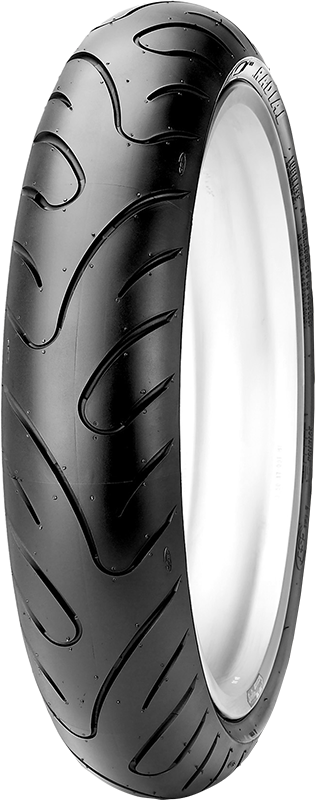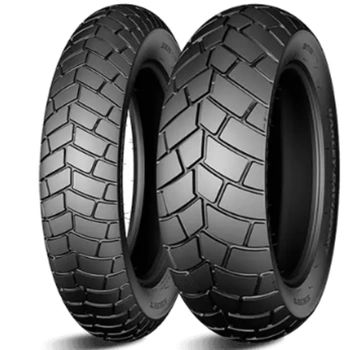All Regarding the Necessary Motorcycle Tyre Overview for Ideal Bike Upkeep and Performance
The Essential Motorcycle Tire Overview works as an essential source for cyclists looking for to enhance their bike's performance and safety. motorcycle tyre guide. It gives understandings right into various tire types and specifications that influence taking care of and longevity. Additionally, understanding appropriate maintenance practices can greatly prolong tyre life. Numerous riders forget crucial aspects that influence their riding experience. Checking out these aspects can bring about notified decisions that eventually enhance both security and pleasure when driving
Comprehending Motorcycle Tyre Kind
When picking bike tires, understanding the numerous kinds offered is important for peak performance and safety. Motorcyclists come across different tire categories, each developed for particular riding problems and designs. For instance, sport tyres stress grip and responsiveness, making them suitable for high-performance bikes and track use. Touring tyres, on the other hand, concentrate on durability and convenience, ideal for long-distance adventures. Off-road tyres include hostile step patterns, supplying traction on uneven surface areas, while dual-sport tires supply adaptability for motorcyclists that move between off-road and on-road conditions.Additionally, cruiser tires are made for security and a smooth trip, dealing with the unique demands of cruisers and touring bikes. Understanding these categories allows bikers to pick tyres that straighten with their riding behaviors and ecological conditions, inevitably improving both safety and security and performance. Each type plays an important role in guaranteeing a superior riding experience customized to the private motorcyclist's needs.
Key Tyre Specifications Discussed
Selecting the proper bike tires includes even more than simply recognizing the different types; it additionally calls for knowledge with key specifications that affect performance and safety. Trick specifications consist of tyre dimension, which is typically expressed as a series of numbers showing width, element proportion, and edge diameter. This code is important for making certain compatibility with the motorcycle.Another vital spec is the load index, suggesting the maximum weight a tire can support. The speed ranking denotes the maximum speed a tire can safely manage, crucial for performance enthusiasts.Additionally, tread pattern and rubber substance impact hold, security, and put on attributes. Tyres with a softer substance have a tendency to offer better grip however wear much faster, while tougher substances last much longer yet might compromise grip. Understanding these specifications enables cyclists to make enlightened choices, improving both their security and riding experience.
Exactly how to Pick the Right Tyres for Your Bike
Just how can a cyclist warranty they select the ideal tires for their motorcycle? Picking the suitable tires includes recognizing the details requirements based upon riding terrain, style, and climate problems. Bikers must first seek advice from the motorbike's manual to recognize suggested tire sizes and specifications.Next, they must review the sort of riding they plan to do-- whether it's travelling, visiting, or off-road. Each group has unique tyre layouts tailored for height performance.Additionally, bikers must assess walk patterns; deeper footsteps use much better grip in wet problems, while shallower treads improve stability on completely dry surfaces.Lastly, it is vital to analyze the tyre's building and construction and material, as these elements influence durability and handling (motorcycle tyre guide). By reviewing these components thoroughly, a rider can with confidence choose tires that boost security, performance, and total riding experience
The Value of Tire Stress and Maintenance
Tyre stress is a significant facet of motorbike maintenance that straight affects safety and performance. Keeping the appropriate tire pressure assurances suitable call with the road, enhancing grasp and stability during trips. Under-inflated tyres can result in increased rolling resistance, leading to poor fuel performance and unnecessary wear on the tires. Conversely, over-inflated tires may lower and trigger an extreme trip grip, especially in wet conditions.Regularly checking tire pressure, preferably prior to each adventure, is crucial to maintaining the bike's general performance. Cyclists need to refer to the manufacturer's specifications for the recommended stress levels. In addition, keeping track of tyre condition and changing pressure according to lots and riding problems is necessary for safety. Proper tire maintenance adds to expanded tyre lifespan, far better handling, and enhanced braking efficiency. Eventually, consistent focus to tyre pressure and maintenance is crucial for guaranteeing a enjoyable and risk-free riding experience.

Acknowledging Indicators of Tyre Use and Damage
Acknowledging signs of tire wear and damages is necessary for maintaining motorcycle security and performance. Secret indicators include reviewing walk deepness and carrying out a comprehensive visual evaluation for any type of noticeable damage. Dealing with these variables promptly can avoid more problems when traveling.
Tread Deepness Assessment
As cyclists take to the roads, the relevance of reviewing tread deepness can not be overemphasized, because used or damaged tyres can substantially affect safety and efficiency. Step deepness directly impacts traction, stopping distance, and cornering security. To examine tread deepness, bikers must make use of a step deepness scale, measuring the grooves at different points across the tire. A depth of 2mm or less suggests significant wear and necessitates immediate substitute. Additionally, cyclists can employ the "penny test" by putting a coin into the walk; if the top of Lincoln's head is visible, the tire is as well put on. Normal checks ensure peak hold on diverse roadway conditions, promoting a safer riding experience while boosting the general handling of the motorcycle.
Aesthetic Damage Inspection
Examining bike tyres for visual damage is crucial for keeping security when driving. Cyclists need to routinely analyze tyres for indicators of wear such as fractures, bulges, or leaks. Unequal wear patterns might indicate alignment concerns or inappropriate rising cost of living, leading right here to compromised performance. Furthermore, looking for foreign things embedded in the step can stop prospective blowouts. Cyclists need to pay attention to the sidewalls, as any kind of cuts or abrasions can weaken the tire's structure. Ensuring that the tread is devoid of extreme wear is important for perfect grasp. Normal visual assessments not only enhance safety and security but additionally lengthen the life of the tires, ensuring a smoother and much more trustworthy riding experience. Prompt detection of damages can stop costly fixings and crashes.
Seasonal Tire Factors To Consider for Various Riding Conditions
When taking into consideration bike tyres, seasonal problems play a vital duty in efficiency. In damp weather, tires made for improved hold and water variation end up being important for security. Furthermore, winter months riding requires particular tyre features to assure peak traction on chilly, potentially unwelcoming surfaces.

Wet Climate Efficiency
Wet climate condition present special obstacles for motorcyclists, making the selection of tyres essential for security and efficiency. Tires designed for wet climate typically include deeper treads and specialized rubber substances that enhance grasp on slippery surface areas. These tyres are engineered to funnel water away, minimizing the risk of aquaplaning and enhancing stability throughout rainfall. Cyclists should think about tires with a balanced layout, offering both grip and longevity in wet problems. In addition, maintaining correct tyre pressure is important, as under-inflated tires can jeopardize performance. Normal evaluations for wear and damage are essential to ensure peak feature when encountered with rain-soaked roads. Choosing suitable wet-weather tyres eventually adds to a safer and more pleasurable riding experience.
Winter Tire Requirements
Riding in winter season conditions presents distinct challenges that demand certain tyre demands to ensure security and efficiency. Winter months motorbike tyres are created with much deeper footsteps and softer rubber compounds, offering boosted grip on cool and unsafe surface areas. This is essential for preserving grip on ice, snow, and wet roads. Furthermore, winter months tyres often feature a special tread pattern that helps channel water away, decreasing the threat of aquaplaning. Motorcyclists must additionally consider the tire's temperature durability, as efficiency can lessen in extreme cold. It is essential to routinely examine tire stress, as it can drop substantially in reduced temperatures. By picking the proper winter months tires, bikers can browse severe conditions with higher self-confidence and security, guaranteeing a safer riding experience.
Tips for Proper Tire Storage and Durability
Proper tyre storage space is vital for keeping their long life and efficiency with time, as overlooking this element can lead to early degeneration. To ensure ideal storage space, it is vital to keep tires in a trendy, dry atmosphere far from direct sunlight and sources of warm, such as furnaces or radiators. Excessive heat can cause rubber compounds to damage down, compromising the tire's integrity.Additionally, tires ought to be stored upright or piled flat, depending on their kind. If stacked, it is advisable to revolve them occasionally to avoid level spots. Proper rising cost of living is also essential; tires ought to be pumped up to the manufacturer's advised pressure to prevent deformation.Lastly, it is useful to cover tyres with a safety material to website link shield them from dirt and impurities. Complying with these tips will help expand the life of motorbike tyres, guaranteeing they continue to be risk-free and effective for usage when the riding period returns to.
Often Asked Concerns
How Frequently Should I Change My Motorcycle Tyres?

Can I Mix Different Tire Brands on My Motorbike?
Blending different tire brand names on a motorbike is generally not suggested. Variants in step patterns, rubber compounds, and efficiency attributes can bring about uncertain handling and compromised security, potentially enhancing the risk of crashes.
What Is the Lifespan of a Bike Tire?
The life expectancy of a motorcycle tyre commonly varies from 5,000 to 15,000 miles, affected by elements such as riding surface, design, and tyre maintenance. Regular assessments can help ensure peak efficiency and security throughout their use.
How Do I Throw Away Old Bike Tyres?
When dealing with old bike tyres, they must be taken to designated recycling facilities. Many regional waste management solutions additionally supply tyre disposal programs, guaranteeing eco friendly handling and compliance with regional laws relating to tyre waste.
Exist Any Kind Of Tire Warranties Readily Available for Motorcycles?
Lots of motorbike tire suppliers supply guarantees that cover defects in material and craftsmanship. The specifics differ by brand and model, so it's important for motorcyclists to assess private guarantee terms before acquiring brand-new tyres. Off-road tyres include aggressive walk patterns, offering grip on unequal surfaces, while dual-sport tires provide adaptability for bikers that shift in between off-road and on-road conditions.Additionally, cruiser tyres are developed for stability and a smooth experience, catering to the special demands of cruisers and visiting bikes. Each classification has distinct tyre layouts tailored for top performance.Additionally, cyclists must evaluate tread patterns; deeper footsteps provide much better grasp in wet problems, while shallower treads enhance security on dry surfaces.Lastly, it is vital to analyze the tire's construction and product, as these factors affect longevity and handling. Correct tire upkeep adds to prolonged tire life expectancy, far better handling, and improved braking efficiency. Appropriate rising cost of living is also essential; tyres need to be blown up to the manufacturer's advised pressure to stay clear of deformation.Lastly, it is valuable to cover tyres with a safety material to protect them from dirt and contaminants. The life-span of a motorbike tyre generally ranges from 5,000 to 15,000 miles, affected by elements such as riding style, tire, and terrain maintenance.